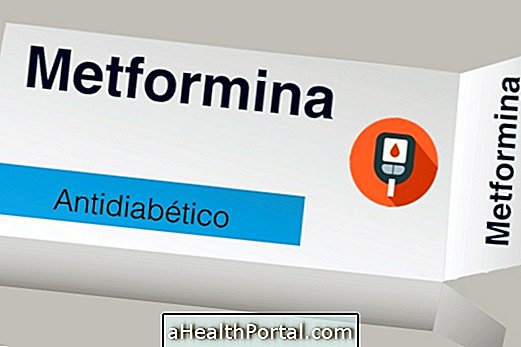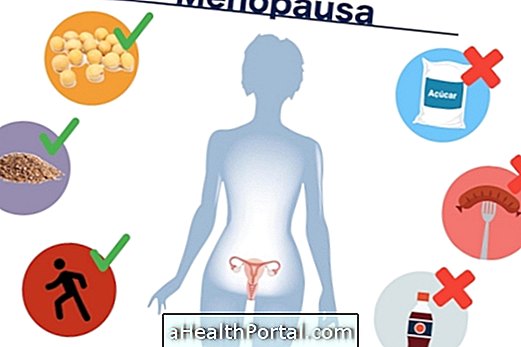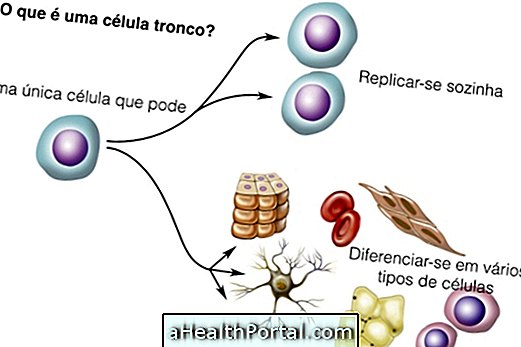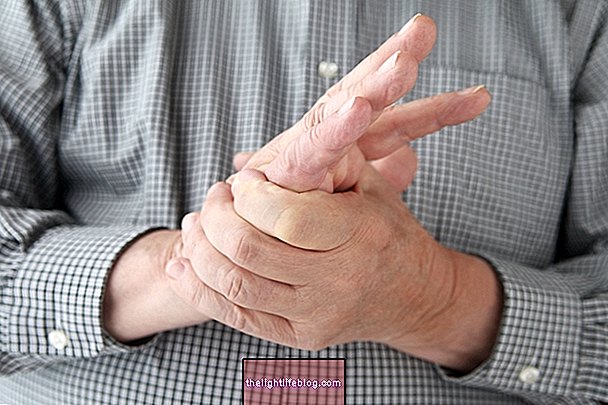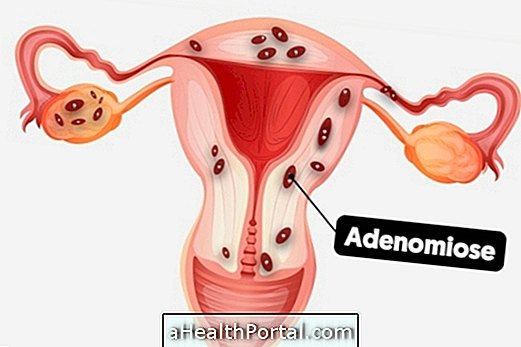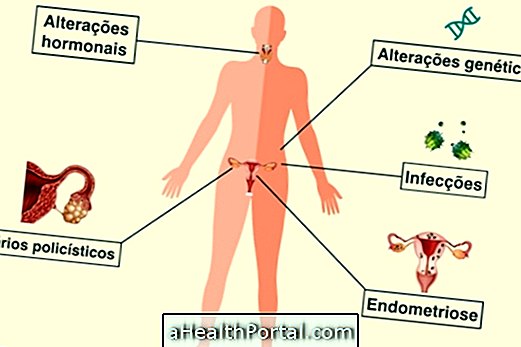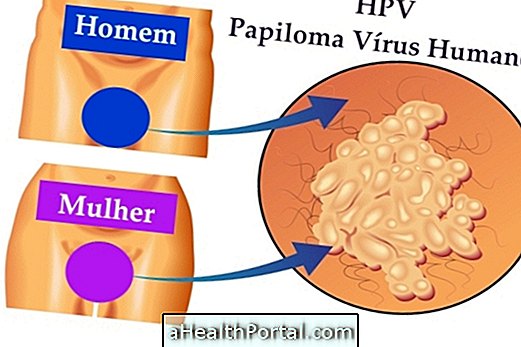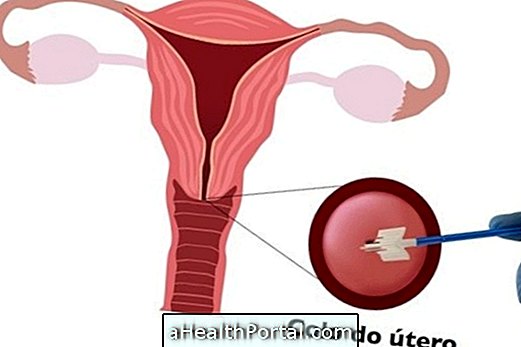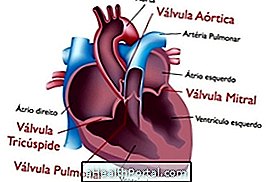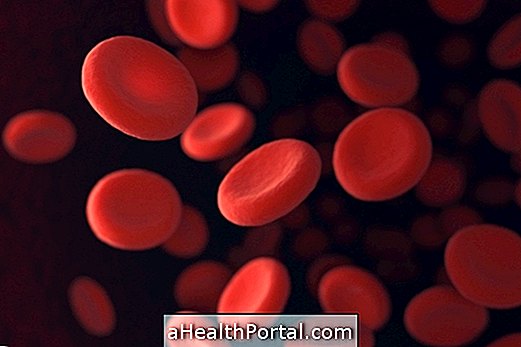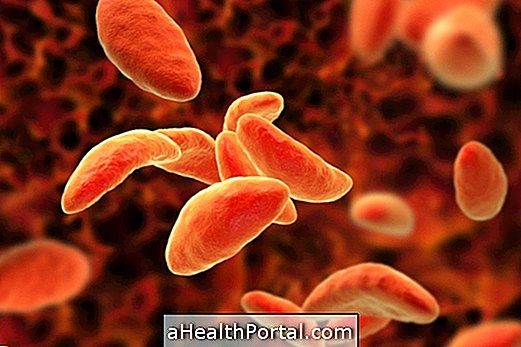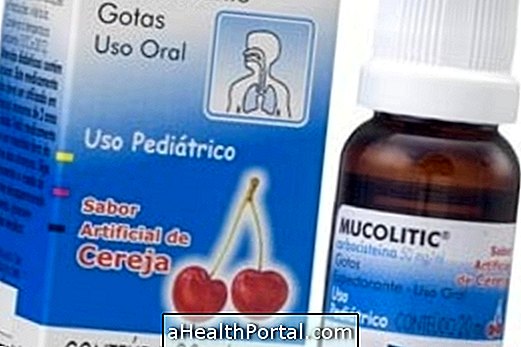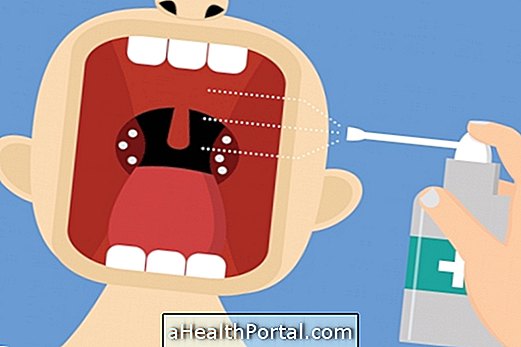To know if your child has diabetes, it is important to be alert to some symptoms that may indicate the illness, such as drinking lots of water, urinating several times a day, getting tired quickly or having frequent stomach and headaches, such as irritability and poor performance at school. Here's how to identify the early symptoms of diabetes in children.
In this case, the child should be taken to the pediatrician to evaluate the symptoms and make the necessary examinations, in order to diagnose the problem and start the appropriate treatment, which can be done with diet, exercise or medication use, to avoid consequences long-term.
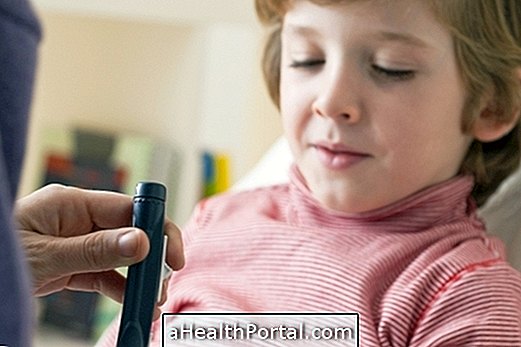
Signs of Type 1 Diabetes
This is the most common type of diabetes in children and can be identified by some symptoms. Check the symptoms your child has:
- 1. Frequent urge to urinate, even at night Yes No
- 2. Excessive thirst feeling Yes No
- 3. Excessive hunger Yes No
- 4. Weight loss for no apparent reason Yes No
- 5. Frequent tiredness Yes No
- 6. Unjustifiable drowsiness Yes No
- 7. Itching all over the body Yes No
- 8. Frequent infections such as candidiasis or urinary tract infection Yes No
- 9. Irritability and sudden mood swings Yes No

In these cases, the child does not have to be making a wrong diet because this type of diabetes arises due to genetic, non-hereditary changes that cause the pancreas to produce less insulin, making it harder for the body to work to reduce blood sugar levels.
This type of diabetes can develop suddenly, with intense symptoms, however, many cases develop slowly and quietly, so if one or more of these symptoms arise and are persistent, it is important to schedule an appointment with your pediatrician for a better investigation.
Signs of Type 2 Diabetes
Type 2 diabetes is more common in children who do not eat properly and therefore are often overweight. See if your child can be type 2 diabetes by answering the following questionnaire:
- 1. Increased thirst Yes No
- 2. Mouth constantly dry Yes No
- 3. Frequent urge to urinate Yes No
- 4. Frequent tiredness Yes No
- 5. Blurred or blurred vision Yes No
- 6. Wounds that heal slowly Yes No
- 7. Tingling in the feet or hands Yes No
- 8. Frequent infections such as candidiasis or urinary tract infection Yes No

In addition, it is possible for the child to present mild and unimportant weight loss and dark coloration in regions of folds, such as armpits and neck, known as acanthosis nigricans.
However, in many cases, this type of diabetes may not cause any symptoms if it develops quietly. Thus, even if the child does not present symptoms but is overweight it is advised to consult the pediatrician to assess blood sugar levels and determine the risk of developing the disease.
Type 2 diabetes develops gradually due to a lack of control in the diet, with excess sweets, pasta, fats and fries, as well as sedentary lifestyle and, therefore, this disease is more common in obese children.
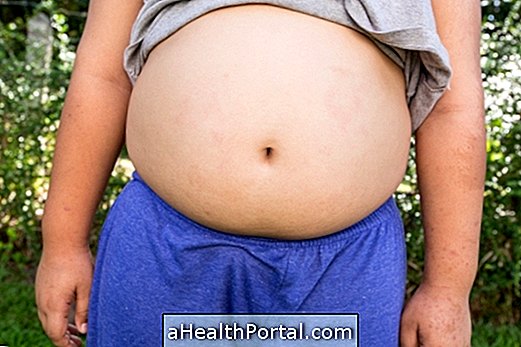
How to confirm if it is diabetes
To diagnose diabetes, your doctor will order blood glucose tests, which may be fasting glucose, capillary glycemia, finger pricks, or through the glucose tolerance test, which is done after consuming a very sweet drink . In this way, it is possible to identify the type of diabetes, and to plan the ideal treatment for each child.
Understand better how the tests that confirm diabetes are done.
How to care for the child with diabetes
Blood glucose control is essential and should be done daily. It is very important to have healthy habits such as moderate sugar consumption, smaller meals and more times a day, and chew well before swallowing.
The practice of physical activity is also a strategy both to control the disease and to prevent its complications on other organs, such as the heart, eyes and kidneys.
This type of control can be difficult for children who have poor eating habits and sedentary lifestyle, but it should be borne in mind that these attitudes are correct for the health of both children and anyone. Here are some tips on what to do to make it easier for you to care for your child with diabetes.
Type 1 Diabetes
In the case of the child with type 1 diabetes, treatment is done with insulin injections a few times a day, in order to mimic the insulin produced naturally by the pancreas. Thus, 2 types of insulin are required, one of slow acting, applied at fixed times, and one of fast acting applied after meals.
Nowadays, there are several insulin options that can be applied through small syringes, pens and even an insulin pump that can stick to the body and make applications at scheduled times. See what are the main types of insulin and how to apply.
Type 2 diabetes
The treatment of childhood type 2 diabetes, initially, is done with the use of tablet pills to lower blood glucose rates and try to maintain the action of the pancreas. In very severe cases or where the pancreas is insufficient, insulin may also be used.
The drug most commonly used to treat type 2 diabetes is Metformin, but there are several options, defined by the doctor, that have forms of action adapted to each person. Understand the medications used to treat diabetes.
See the following video for very practical and important tips to help your child lose weight and control blood sugar:


